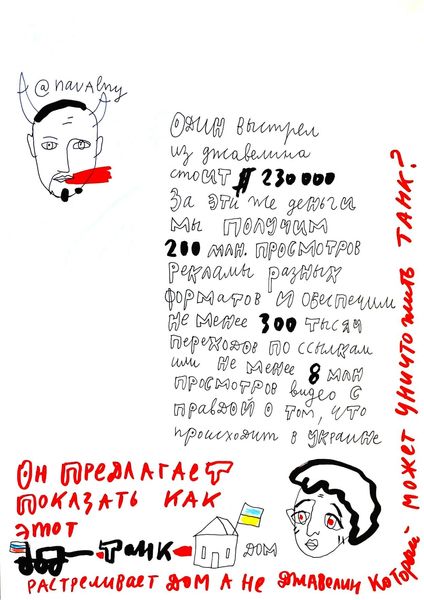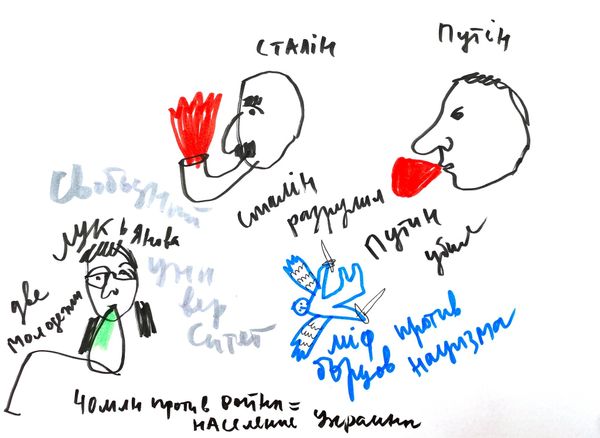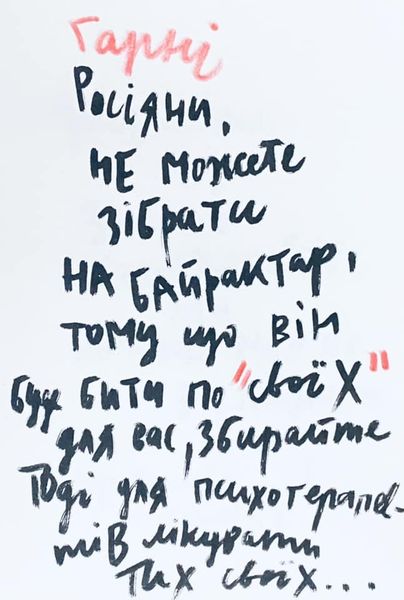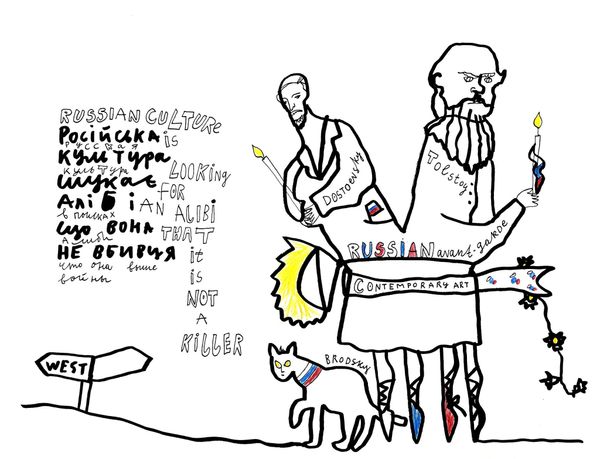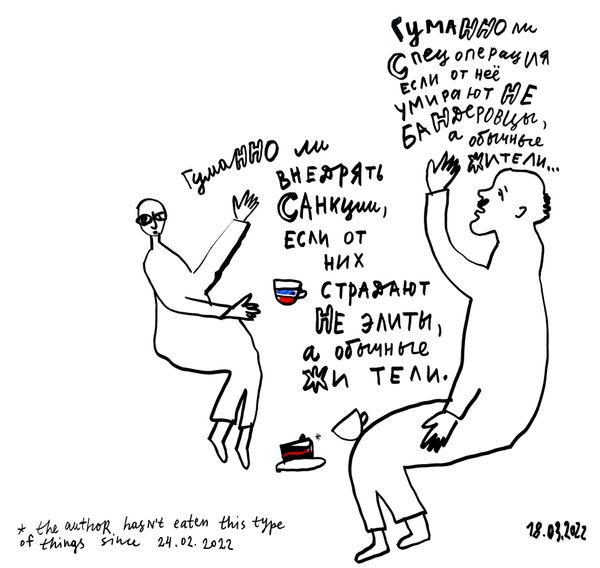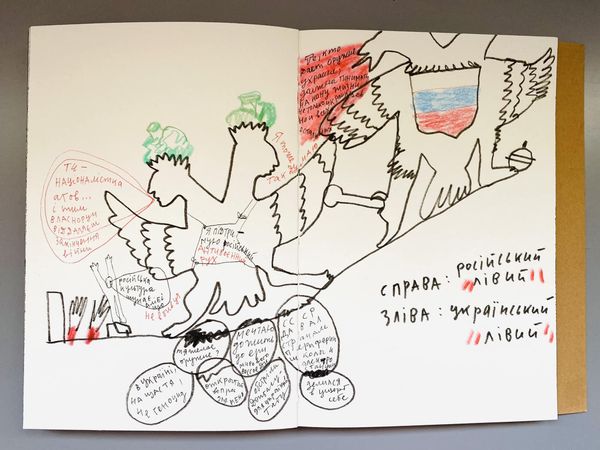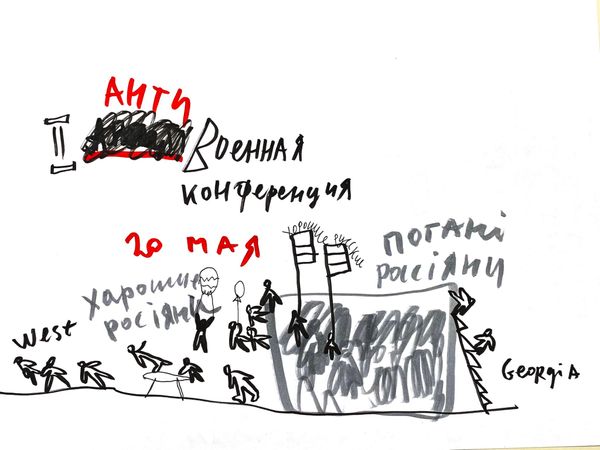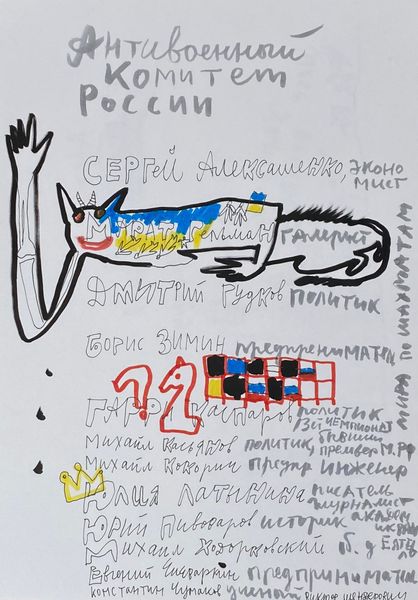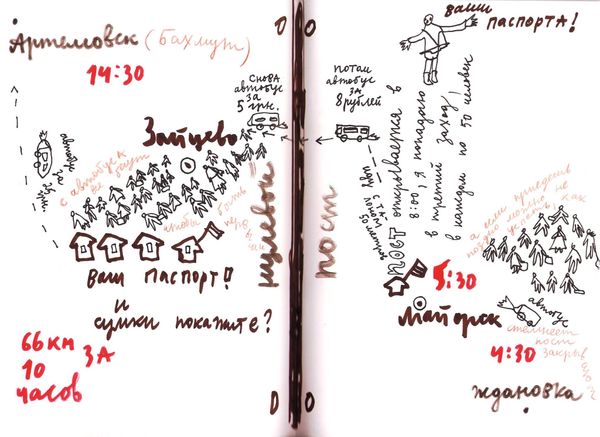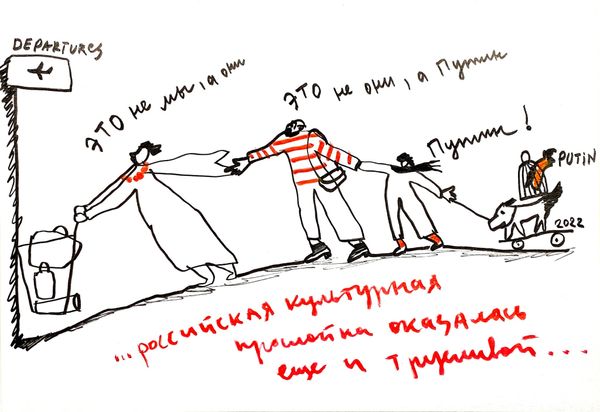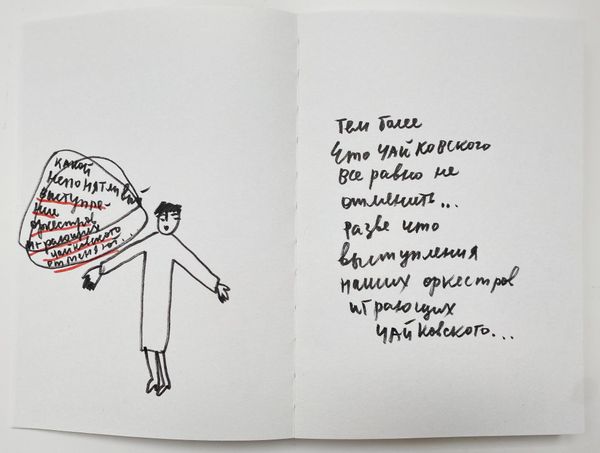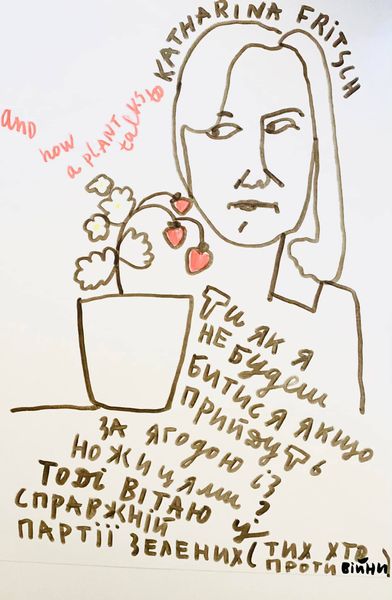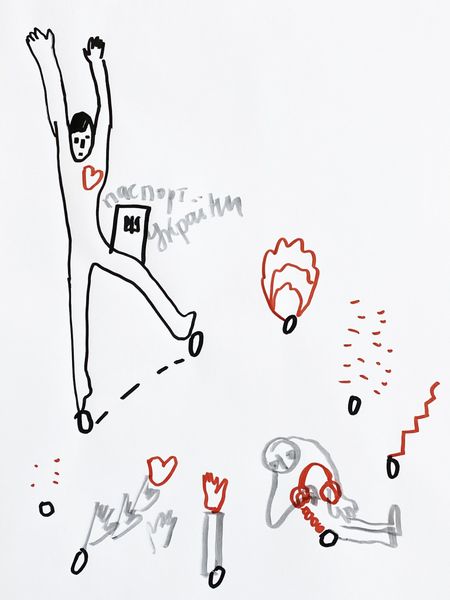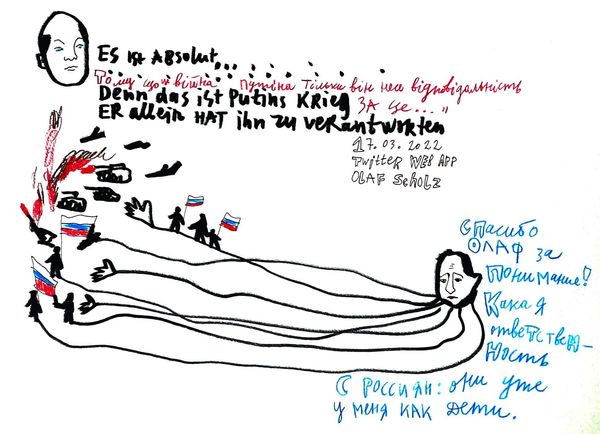
drawing, graphic-art, paper, typography, ink
#
drawing
#
graphic-art
#
contemporary
#
brush pen line
#
hand-lettering
#
lettering
#
activist-art
#
playful lettering
#
hand drawn type
#
hand lettering
#
paper
#
typography
#
ink
#
hand-drawn typeface
#
feminist-art
#
typography style
#
line
#
handwritten font
#
identity-politics
#
small lettering
Copyright: Alevtyna Kakhidze,Fair Use
Curator: This untitled drawing by Alevtyna Kakhidze is striking in its simplicity, a black and red ink composition with hand-lettering that feels both playful and purposeful. What captures your attention most about it? Editor: I'm drawn to how the words intertwine and almost become an image themselves. I'm also curious about the meaning – what’s the artist trying to communicate through this typography and imagery? Curator: Exactly. This piece is less about aesthetic beauty and more about direct communication. The text translates to "State and Promotion of Equal Opportunities for Women and Men in Cultural and Creative Industries", with mentions of Azerbaijan, Armenia, Georgia, and Ukraine. It's agitprop art operating within the realm of identity politics and feminist discourse. The artist uses the visual language of activism, echoing historical movements while addressing contemporary inequalities. The style—raw, handwritten—does that intentional, no? What does it evoke for you? Editor: It definitely feels very immediate, like a protest sign or a call to action. It’s interesting how she uses both script and image in one, because the image and associated words don’t easily convey their associated meaning to someone who can't read it.. Curator: Precisely. Consider the context in which Kakhidze operates. As a Ukrainian artist, her work often engages with social and political issues, especially regarding gender and cultural identity. The somewhat rough, hand-drawn quality underlines the urgency and the personal stake the artist has in these issues, refusing a slick, corporate aesthetic for something far more vulnerable and, in my opinion, authentic. Editor: So it's a conscious decision to use this style as a means of emphasizing the message and aligning with feminist principles? Curator: Absolutely. The "unfinished" aesthetic of the piece actually highlights an awareness that these battles and struggles are ongoing, never truly ‘finished’ or ‘solved.’ A perfect form wouldn’t serve this agenda. Editor: I see that now. Thanks for bringing out those subtle nuances in the composition. Curator: Of course! It's crucial to consider these contextual elements to fully appreciate and interpret art like this.
Comments
No comments
Be the first to comment and join the conversation on the ultimate creative platform.
